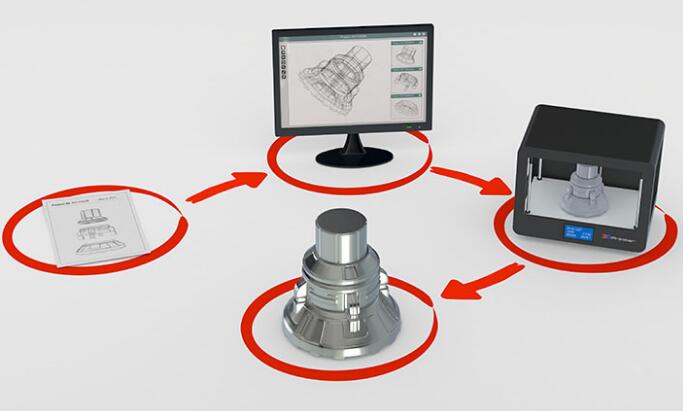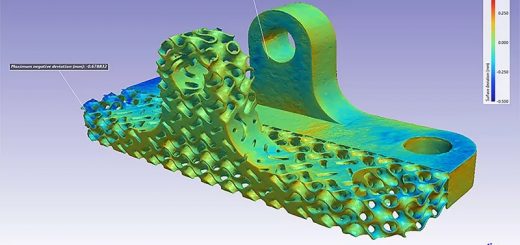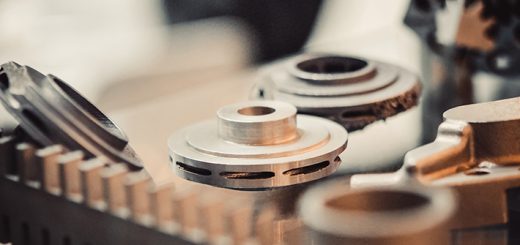The 5 Most Important Standards in Additive Manufacturing
Additive manufacturing (AM) is the revolutionary process of creating three-dimensional objects by the successive addition of material – whether plastic, metal, ceramic, composite, or something else. The process starts with a digital model, usually generated by computer-aided design. Selecting from a variety of specialty AM equipment, users can take just about any shape they design digitally and render it in the real world. This is fundamentally different from traditional manufacturing methods, which either use molds and dyes to shape the raw material, or cut and grind away unwanted excess material from a solid starting block to create the desired result.

Today, new technologies, advanced industrial AM equipment, and better performance materials are driving the productivity and reliability of AM-based production. This in turn has brought this transformative technology to a range of different industries including aerospace, energy, automotive, medicine, consumer products, and more.
But as the industry continues to expand, it is important to remember the role that standards have played – and still do – in shaping its growth and development. We spoke with industry expert Klas Boivie, Ph.D., senior research scientist with SINTEF Manufacturing AS, executive committee member of ASTM International’s committee on additive manufacturing technologies (F42), and member of ASTM’s board of directors, to learn what he thinks are the five most important standards in additive manufacturing.
1. Standard Terminology for Additive Manufacturing Technologies (F2792)
Although it has since been withdrawn due to the emergence of a subsequent joint ISO/ASTM standard, F2792 was the first additive manufacturing standard passed by ASTM. Published in 2009, it created the definition of AM that, in essence, is still in use today. The terminology included definitions of terms, descriptions of terms, nomenclature, and acronyms associated with AM technologies in an effort to standardize the terminology used by AM users, producers, researchers, educators, press/media, and others. By creating a common lexicon for the AM industry, this standard set the stage for the continued development of AM standards and ensured that everyone in the field could begin speaking the same language.
2. ISO/ASTM 52900 – Terminology for AM – General Principles – Terminology
Published in 2015, ISO/ASTM 52900, the successor to F2792, is noteworthy because it significantly expanded the original terminology. It was also the first standard for AM to be jointly developed and accepted by the International Organization for Standardization (ISO), ASTM International, and subsequently accepted by the European Committee for Standardization (CEN). This standard took the step of uniting the world’s standards bodies around additive manufacturing and coordinating standards development across borders and industries. Another revision of this standard is currently being developed and will contain much more detailed guidelines and further clarifications for the industry.
3. Standard Specification for Additive Manufacturing Titanium-6 Aluminum-4 Vanadium with Powder Bed Fusion (F2924)
This standard covers additively manufactured titanium-6aluminum-4vanadium components using full-melt powder bed fusion such as electron beam melting and laser melting. It was one of the early standards developed by ASTM, and by providing specifications for feedstock and supply chains, it gave AM’s early adopters a valuable perspective on AM processing in an industrial context. From this perspective, F2924 can serve as a valuable educational document for those who are looking to get into AM for industrial production. Published in 2012, the group that developed this standard provided a rich array of reference sources that have helped numerous AM businesses get their start.
4. ISO/ASTM 52901 – Additive Manufacturing – General principles – Requirements for Purchased AM Parts
52901 was published in 2017 and offers detailed specifications around what customers should look and ask for when buying an AM part. What requirements should each part list? Whatqualities should it specify? While this standard is important for buyers, it’s even more impactful for manufacturers of AM products. Thanks to 52901, producers are better able to know what buyers will be asking for and what they will need to supply in each of their parts.
5. ISO/ASTM 52910 – Guidelines for Design for AM (ISO/ASTM 52910)
A general guide providing requirements and recommendations for using AM in product design, the development of 52910 was begun by ASTM but was eventually adapted to be published as a joint ISO/ASTM standard. Because manufacturing objects by the successive addition of materials is fundamentally different from conventional manufacturing processes, the successful use of AM requires a way of thinking that is different from conventional manufacturing. There are also great differences between the various categories of AM processes. As a process document, this standard, published in 2017, describes opportunities and design freedoms, discusses general design considerations, and lists “red-flags” for designers that can lead to problems in many AM systems. As many newcomers are not familiar with these issues, 52910 should help AM spread to many new applications and industries.
As with any innovative technology, Boivie believes that standards organizations need to be careful when developing standards for emerging industries. Close collaboration is crucial in ensuring that standards and specifications support, and do not limit, the continued growth of emerging industries such as AM.
In the case of AM, standards – particularly the five listed here – have helped guide the development of the industry in recent years, allowing it to flourish across industries and applications.
Source: ASTM




Recent Comments